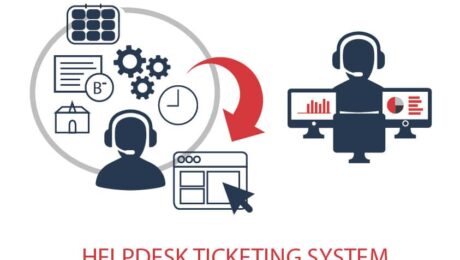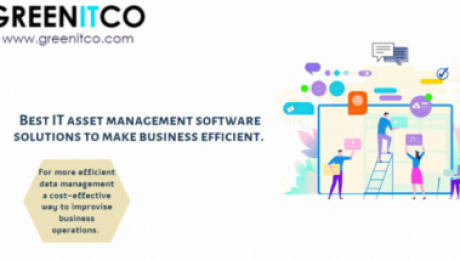What is an IT Ticketing System?
In today’s fast-paced digital environment, businesses must stay on top of IT issues to maintain smooth operations. An IT ticketing system is a vital tool for managing, tracking, and resolving technical problems. Whether it’s addressing a software glitch, hardware malfunction, or network outage, an IT ticketing system ensures these problems are efficiently handled. This article delves into what an IT ticketing system is, how it works, and why it’s essential for organizations of all sizes.
Understanding IT Ticketing Systems
An IT ticketing system, also known as a helpdesk or service desk system, is a software platform designed to manage and streamline IT support tasks. When users or employees encounter technical issues, they submit a “ticket” through the system, which contains details of the issue. The IT team then tracks the ticket from its initial submission to resolution.
The primary purpose of an IT ticketing system is to ensure that no issue goes unresolved and that the IT department can prioritize, assign, and monitor tasks effectively. By automating workflows and providing a structured approach to problem resolution, these systems save businesses both time and money.
Key Features of an IT Ticketing System
To better understand the value of an IT ticketing system, let’s explore some of its key features:
Ticket Management
The core functionality of an IT ticketing system is managing tickets. Tickets serve as digital records for tracking issues, requests, and incidents. Each ticket typically includes:
- Issue description
- Priority level (low, medium, high)
- Status (open, in progress, resolved, closed)
- Assigned IT technician
- Progress notes and solutions
Effective ticket management ensures support teams can track issues in real-time, reducing delays and miscommunication.
Automated Workflows
Automation is a game-changer in IT ticketing systems. Workflow automation eliminates the need for manual task assignments by routing tickets to the appropriate technician based on predefined rules. For example, an issue categorized as a “network outage” can automatically be assigned to a network specialist. This saves time and ensures tickets are handled by the most qualified personnel.
Prioritization and SLAs
Prioritization features allow IT teams to address critical issues first. Many ticketing systems offer Service Level Agreement (SLA) management tools, ensuring support teams meet response and resolution deadlines. High-priority tickets can trigger alerts or escalations if they are not addressed within a set timeframe, ensuring compliance with policies or client agreements.
Knowledge Base Integration
A knowledge base is a repository of helpful articles, FAQs, and troubleshooting guides. IT ticketing systems often integrate with a knowledge base, allowing users to resolve common issues independently, without creating a ticket. This reduces the workload on IT teams and empowers users to find solutions on their own.
Reporting and Analytics
IT ticketing systems provide reporting and analytics tools to help managers monitor performance, identify recurring issues, and analyse technician workloads. Reports on ticket resolution times, user satisfaction, and incident types help organizations make data-driven improvements to their support processes.
Multi-Channel Support
Advanced IT ticketing systems offer multiple communication channels—such as email, phone, chat, and web portals—allowing users to report issues in their preferred way. This feature ensures that tickets are captured regardless of the submission method.
Mobile Access
With remote work becoming more common, IT teams need access to the ticketing system from anywhere. Mobile apps or responsive web interfaces allow technicians to track and resolve issues on the go, enhancing flexibility and ensuring faster resolution, especially for time-sensitive problems.

Benefits of Using an IT Ticketing System
Implementing an IT ticketing system offers several advantages:
- Improved Efficiency
By centralizing all IT requests and issues, the ticketing system simplifies workflows for the IT team. Tickets are easy to track, assign, and prioritize, resulting in faster resolution times. Automation further enhances efficiency by reducing manual tasks. - Enhanced Collaboration
An IT ticketing system fosters collaboration among IT staff by enabling multiple technicians to contribute to a single ticket. This is particularly useful for complex issues that require input from specialists in different areas. It also improves communication between the IT team and users by providing real-time updates through the ticket. - Better Organization and Documentation
Each ticket serves as documentation of an issue, providing a detailed record that can be referenced in the future. This helps technicians resolve recurring problems more efficiently and maintains a history of incidents and solutions, which can be valuable for audits and compliance. - Increased Accountability
With tickets assigned to specific individuals and tracked throughout their lifecycle, IT teams maintain better accountability. Managers can easily see who is responsible for each task, ensuring no ticket slips through the cracks. - Scalability
IT ticketing systems are scalable, accommodating the needs of both small businesses and large enterprises. As an organization grows, the system can handle an increasing number of requests without overburdening the IT team.
Why Your Business Needs an IT Ticketing System
Regardless of the size of your organization, an IT ticketing system offers measurable advantages:
- Faster Response Times
With a ticketing system, issues are logged immediately and routed to the appropriate team members. Automation ensures high-priority tickets receive prompt attention, minimizing downtime and disruptions. - Reduced IT Costs
By streamlining processes and reducing inefficiencies, an IT ticketing system helps save money. It minimizes the time technicians spend on each issue and allows users to resolve common problems through self-service, optimizing resource allocation. - Improved User Experience
Fast and reliable IT support translates into a better user experience for both employees and customers. When issues are resolved promptly, users remain productive and satisfied. A well-implemented ticketing system also provides transparency by keeping users informed about the status of their requests, reducing frustration.
Conclusion
An IT ticketing system is essential for modern IT support, offering an efficient way to manage and resolve technical issues. From ticket tracking and automation to reporting and SLA management, these systems empower IT teams to provide high-quality support while minimizing costs and improving response times. Whether you’re a small startup or a large enterprise, adopting an IT ticketing system is a smart investment that will streamline operations and enhance user satisfaction.
For businesses seeking comprehensive IT ticketing tools, GreenITCo offers innovative solutions tailored to meet organizational needs. Their robust software, which includes integrated ticketing and asset management features, ensures no issue goes unresolved while maintaining optimal productivity across teams.
- Published in Asset audit, Asset Management, helpdesk outsourcing, ITM, Mobile, Technology, technology support
How to Choose the Best Helpdesk Ticketing System for Effective IT Support
Introduction
In today’s fast-paced digital world, efficient IT support is essential to maintaining seamless operations across businesses of all sizes. Whether it’s troubleshooting network issues, resolving software glitches, or managing hardware failures, having a well-structured IT ticketing system is crucial. A helpdesk ticketing system serves as the backbone of IT support by streamlining communication between users and IT teams, ensuring prompt issue resolution, and optimizing workflow management.
This article will guide you through everything you need to know about helpdesk ticketing systems and how to choose the best one for your business. We’ll cover key features, benefits, and best practices to help you make the most of your IT ticketing system. Let’s get started!
What is a Helpdesk Ticketing System?
A helpdesk ticketing system is a tool that IT teams use to manage and resolve user issues. It acts as a centralized platform where support tickets—requests or reports of issues—are created, assigned, and tracked through to resolution. These systems enable IT departments to handle user requests efficiently and maintain a detailed record of support-related activities.
The primary goal of a helpdesk ticketing system is to ensure that IT support teams can systematically prioritize and manage issues, resulting in faster resolution times and improved user satisfaction.
Why Do You Need a Helpdesk Ticketing System?
Managing IT support requests without a structured system can be overwhelming. Issues may go unnoticed, causing delays, downtime, and dissatisfied users. Implementing a robust ticketing system offers several key benefits:
- Centralized Communication: All user requests and issues are documented in one place, giving IT teams a clear overview of all tasks in progress.
- Increased Efficiency: Automated workflows and ticket assignments reduce manual effort and speed up problem resolution.
- Better Accountability: Support tickets are assigned to specific team members, making it easy to track progress and ensure acc ountability.
- Improved Customer Satisfaction: Faster, more efficient resolutions lead to happier users and increased productivity.
- Comprehensive Reporting: IT teams can generate reports on resolution times, problem trends, and performance metrics to support continuous improvement.
Key Features of an IT Ticketing System
When selecting the right ticketing system for your organization, look for specific features to ensure the platform meets your needs:
1. Automated Ticketing
Automation is a critical feature in modern helpdesk systems. Automated ticket assignment ensures that requests are routed to the right personnel or department based on predefined criteria, minimizing delays and ensuring that high-priority issues receive immediate attention.
2. Multi-Channel Support
Users may submit IT support requests through various channels, such as email, phone, chat, or social media. A reliable ticketing system integrates these channels into a single platform, ensuring no request goes unnoticed.
3. Ticket Prioritization and Categorization
Effective ticketing systems allow for the categorization and prioritization of issues. For instance, a minor software update can be marked as low priority, while a network outage would be labelled as high priority. This ensures that critical issues are addressed first.
4. Self-Service Options
Many advanced ticketing systems include self-service features, such as a knowledge base or FAQs. These resources empower users to resolve common problems independently, reducing the number of tickets IT teams need to manage.
5. Mobile Access
In today’s mobile-driven world, IT support teams need the ability to manage tickets on the go. A mobile-friendly platform ensures that tickets can be tracked, updated, and resolved from anywhere, improving response times and productivity.
6. Reporting and Analytics
Comprehensive reporting tools are a must-have feature in any IT ticketing system. IT managers need access to detailed analytics to understand performance trends, track key performance indicators (KPIs), and identify areas for improvement. Insights from data such as ticket volume, response times, and resolution rates can help IT teams optimize their support processes.

How to Choose the Right IT Ticketing System
Selecting the best ticketing system requires a thorough understanding of your organization’s needs. Here are key factors to consider:
1. Scalability
Choose a system that can grow with your organization. Ensure it can handle an increasing number of users, tickets, and requests as your business expands.
2. Ease of Use
A user-friendly interface is essential for both end-users and IT staff. Complicated tools can cause delays, frustration, and a steeper learning curve.
3. Integration Capabilities
Look for a system that integrates seamlessly with other tools, such as asset management systems, customer relationship management (CRM) platforms, or monitoring software, to enhance workflow and data sharing.
4. Customization
Since every organization has unique needs, choose a helpdesk ticketing system that allows customization. The ability to create custom workflows, ticket categories, and reports ensures the platform aligns with your processes.
5. Cost
Consider both the initial cost and ongoing maintenance fees. While free or low-cost solutions might be attractive, they may lack essential features. Aim for a system that offers a good balance between features and affordability.
Best Practices for Using an IT Ticketing System
Once you’ve selected the right ticketing system software, following best practices will help you get the most out of it:
- Train Your Team: Ensure IT staff are trained to use the system effectively. Regular refresher courses can help them stay updated on new features and workflows.
- Monitor KPIs: Track performance metrics like response times, resolution rates, and user satisfaction to identify areas for improvement.
- Encourage User Feedback: Gathering feedback from users helps identify pain points and provides insights for refining processes.
- Update the Knowledge Base Regularly: Keep self-service resources up to date to minimize incoming tickets and empower users to resolve issues independently.
Conclusion
An efficient helpdesk ticketing system is the cornerstone of any successful IT support strategy. By selecting the right system, your organization can streamline support processes, reduce response times, and enhance user satisfaction. When evaluating ticketing software, prioritize features such as automation, multi-channel support, and reporting tools to ensure your IT team can effectively manage tickets.
Choosing the best ticketing system is an investment that will pay off through improved efficiency, accountability, and productivity in the long run.
- Published in Asset audit, Asset Management, helpdesk outsourcing, ITM, Mobile, Technology, technology support
How Best IT Asset Management software tools can improve efficiency.
Using the best IT asset management software tools offers solutions for making your business more efficient. There are many assets in the organization, some are scattered across different countries or places. The concern is how to manage and track these assets effectively and ensure proper maintenance of assets timely.
Here the best IT asset management software plays a significant role to manage assets, tracking, reports, and maintaining them. Asset management software allows managing the assets, hardware, software, and other accessories that exist in the organization’s network efficiently. It allows businesses to monitor or track their assets and effectively manage them for optimum utilization while reducing IT and software costs.
We can’t deny that modern businesses are dependent on assets or digital assets in order to gather good revenue for business and survive with marketing trends. It is essential to monitor whether the assets of the organization and their implementation is profitable for your business or not. The aim of the Best IT asset management software tool is to get value from their assets, maintain, initiate business growth, and reach the business goals within the timeline.
If you want your organization’s operations to work efficiently, and smooth workflow operations This software can help you to make informed business decisions and contribute to business growth. Asset management provides organizations the scope to improve business efficacy and management of IT infrastructure efficiently. Moreover, use the effective software asset management tool to optimize the business environment and systematically use your assets.

Reasons that make asset management software to upscale business operations & improve efficiency
There are many reasons for organizations to implement Asset management software tools with business operations. Many organizations lack asset management software tools can lead to compliance issues, wasted resources, delays, incurring heavy costs, and more. To lessen such risks, organizations should know how their assets are being utilized, their configuration, asset roles, etc. To achieve these goals, by implementing the best IT asset management software for the organization.
Proper regulation of organizations’ assets and the implementation of asset management systems the right way can boost efficiency and profit at a tremendous rate. In this competitive arena, every entrepreneur is looking up for the tools and assistance to sustain in the market.
Assets play a keen role to get profits from projects and commitments only if they are utilized in an efficient manner. All organizations invest in assets to enhance productivity and profit margins. Asset maintenance and depreciation often become difficult, Like any other department, assets also require preservation ad proper planning.
The best IT Asset management software tools are required by the organization to maintain & improve their efficiency
Greenitco offers a great option for businesses that are looking for the Best IT asset management software tools solution. This software solution is compatible with businesses and offers top-notch tools and features to upscale businesses.
Benefits of using the best Asset Management software solutions for business
The main issue in the organization like to monitor and manage existing assets manually. This may lead to errors and compliance issues. So to avoid these errors. Greenitco technologies offer the assistance of asset management software. It can help you to streamline the workflow and offer a platform where you can manage and monitor assets efficiently. Managing assets can give you good returns on their profit value for your business.
Check some ways the Asset Management system can increase business efficacy
Improvised assets or equipment effectiveness
Assets and equipment of the organization are important to be in good condition to give effective output. The profits of the organization depend on it too. While maintaining the updated status of the equipment manually, along with maintaining records is a tedious task. But with the help of an Asset management software system, it becomes easy to maintain & access the effectiveness of every asset or equipment.
The best IT Asset management software system has indicators to evaluate the functioning of machines and coordinate assets across the globe easily. It checks the completability of the machines with the required output and enables o offer of effective solutions for it. Implementation of an Asset management system for the business can manage the assets and maximize the income range of the enterprise.
Improvised operational efficacy
When you have assets organized once in the centralized database. It would be easy to manage operations easily. That includes their capabilities, how they can be operated in the most effective way, and a detailed return on investment (ROI).
Increased Asset Visibility
Every organization has n number of assets that have their own purpose. Assets like physical assets, It assets such as computers servers, software assets, etc. As the business grows so as the assets county increases.
Asset management tools offer features to ensure that all assets are discoverable & visible to the business owners. The information is stored in the centralized database system that is accessible as per the permissions granted by business owners. Easy to access the assets of the organization and manage them easily
Asset Tracking
This feature lets you know exact details on a real-time basis about assets and management. It assists in scheduling the maintains of assets and plays an important role to increase the lifespan and durability of assists. When let you manage large assets by assigning asset number or ID, so it can work well.
Asset Life cycle management
There are four stages of the asset management lifecycle :
- Planning: Identifying the need to purchase an asset that can be useful to generate profit.
- Acquisition: Purchasing and assigning an asset according to the business requirement.
- Operation and Maintenance: Ensuring the asset’s life cycle is working uninterruptedly.
- Disposal: Calculating an asset’s depreciation value and managing depreciated assets efficiently.
Having a detailed understanding of Asset life cycle management ensures that assets are purchased, operated, maintained, disposed and tracked efficiently. It ensures the maintenance status is updated efficiently. Along with having insight into data
Accelerate Maintenance Planning
IT Asset management software assists in building an efficient maintenance schedule for assets. It ensures assets are in working order and are being tracked and managed by the system.
Maintenance strategies can differ as per business requirements. Create a maintenance plan for the assets required as per business requirements.
Maintenance for assets helps to :
- Reduce downtime of assets.
- Minimize emergency repair and breakdown costs
- Increase asset uptime
- Asset depreciation management
- Prolong the life expectancy of assets
Efficiency to assess potential risk with effective, measures
It enables the establishment of the process to improve the business operations and productivity of the organization. If the asset management process is implemented effectively, you can monitor and manage assets with a systematic approach. Moreover, organizations can increase production and returns on investment.
Cloud-based solution
Cloud hosting is an important feature of asset management software to have for your organizations. It gives information about the assets anytime and anywhere. Offering the best IT asset management software that makes it easy to access through the application or from a browser or by any device remotely. Moreover, users can receive software updates when scheduled.
Conclusion
Deploying an efficient technology for your business is profitable for your business. Focus on work and let the software manage the workflow. Asset management software is an important aspect of the business. Opting for an Asset Management System can be your first step in taking your business venture to scale. Moreover, Organization’s assets are the most important factors for the overall growth of your business. Therefore, you must look for asset management software very wisely
- Published in Asset audit, Asset Management, helpdesk outsourcing, Mobile, Networking, Technology, technology support



